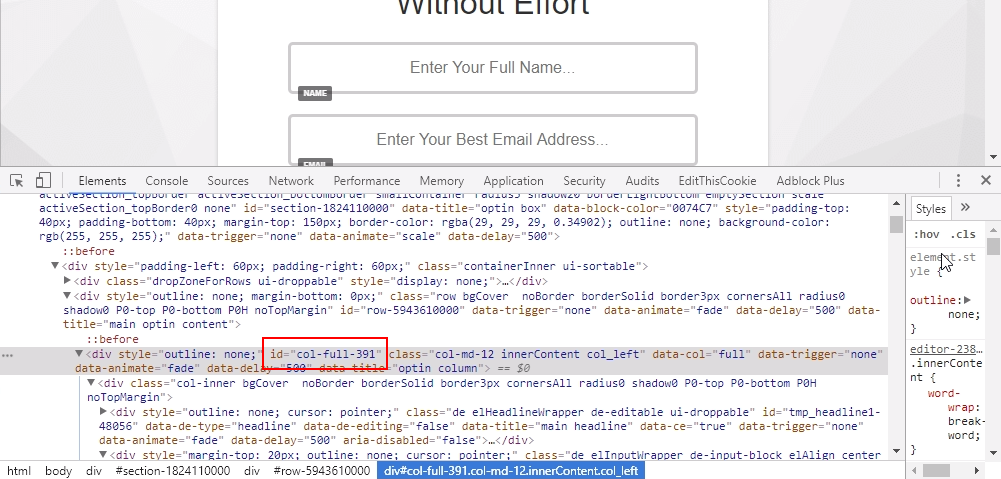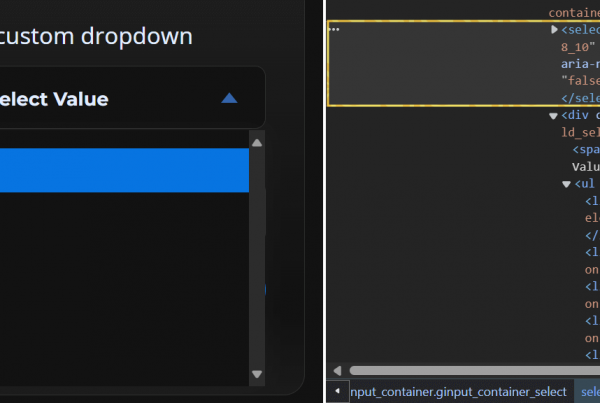Insiteful can help you track form entries and more from virtually any web form in just a few clicks. Apart from helping you capture 100% of leads that fill out your forms, our plug-n-play solution also enables you to increase your conversion rate with power-ups (i.e. save & continue later), auto follow-up, and smart insights (i.e. confused / abandoned form fields).
ClickFunnels is one of the easiest ways to instantly create high-quality landing pages and funnels for any type of business.
You can track any forms created with ClickFunnels by following the usual method for tracking web forms with Insiteful, but we’ve included some specific instructions below for your convenience.
However, before you get started, please make sure to read about the important preliminary step in ClickFunnels Forms to ensure you’re able to track your web forms accurately Insiteful — nothing complicated, just an additional click!
Want to save lead data from users that start to fill out your WordPress forms but don’t finish? It doesn’t have to be tedious. There’s nothing more disheartening than missing out on a potential opportunity due to form abandonment or website drop-offs; Insiteful can help you seal the leaks in your lead forms!
Before you get started with the how-to guide, make sure to complete the preliminary step below:
Troubleshooting ClickFunnels Forms + Insiteful tracking (Important Pre-Requisite)
1. Do not use the default tracking code
The default Javascript files used by ClickFunnels include some functions that conflict with Insiteful, so we have designed an alternative code to use on ClickFunnels site. It’s very simple: you just set the “src” attribute to “compile-cf.min.js” instead of the default “compile.min.js”, as seen below:
<script src="//a.insiteful.co/dist/compile-cf.min.js"></script> <script defer>insiteful_activate('YOUR ACTIVATION CODE');</script>
But wait, that’s not all! There’s still one extra required step for ClickFunnels websites:
2. Track inputs without <form> elements
By default, ClickFunnels renders inputs without a parent <form> element when displaying forms to users. This is why most analytics platforms are unable to track these forms & fields: most tracking platforms (including Insiteful) identify inputs by the unique HTML id of the form.
Fortunately, there is a simple workaround to track your existing ClickFunnels forms without changing very much:
The simpler method is to copy & paste our additional tracking code for inputs without <form> elements after the default Insiteful script:
<script src="//a.insiteful.co/dist/track-all.min.js"></script>
However, our recommended approach is to add the following tracking code to your form to add a unique HTML id so we can track your form(s). Visit the ClickFunnels page editor, click “Settings” at the top, then “Tracking Code“. In the “Footer Code” you will paste your Insiteful tracking code (if it is not already installed) after the following code:
<script type="text/javascript">
$( document ).ready(function() {
$('#CLICKFUNNELS_HTML_ID_HERE').wrap('<form class="contact-us"></form>');
});
</script>
Important: be sure to replace the unique ID bolded in above with the appropriate values from ClickFunnels. To retrieve this, go to your ClickFunnels landing page, right click the form and click “Inspect“. Find and copy the ID of the form (as seen below); the ID will begin with “col-”

Read more about how-to add tracking codes from the official ClickFunnels documentation, here.
How to track ClickFunnels forms
- Add your website: Just login to Insiteful & visit the Domains page and add your website where indicated in the screenshot below.

- Install code: Simply copy & paste both the special ClickFunnels tracking code (see instructions above) + the generic Insiteful tracking code from the Install page. Be sure to include the “compile-cf.min.js” special tracking code for ClickFunnels sites (as opposed to the default “compile.min.js” — as elaborated above. That’s all there is to it!



